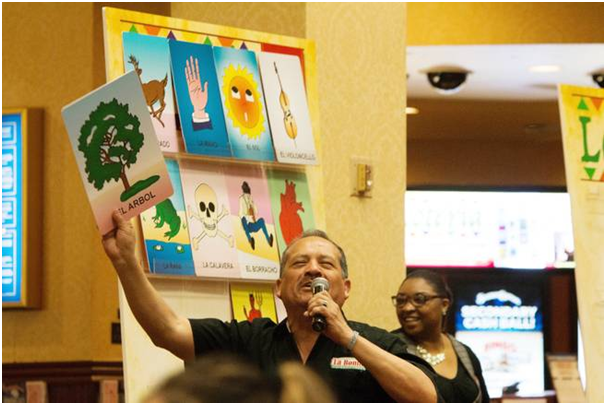What Are The Bingo Patterns And How Do They Work In Bingo Game?
Patterns are often found in games like Keno and Bingo. These are a way of playing these games. While everyone is familiar with the traditional way of getting a bingo; all of the numbers in a straight line, across, down, the four corners or a blackout, there are other bingo patterns as well. Bingo patterns can range from simple to complex. The key to understanding how a pattern works is to concentrate on the game in front of you. The pattern that is needed to win can manifest in all sorts of directions and provide a challenge for even the most seasoned bingo players.
Different games require different patterns. Here are some of the more common bingo patterns that are played around the world wherever bingo is played.
Arrow – The arrow pattern can usually be formed in any corner and a diagonal that stretches to the opposite corner.
B & O – For this bingo pattern, to win, every square in the B and O line are covered.
Blood, Sweat & Tears – This bingo pattern is comprised of three bingos on the same card. For most games employing this pattern, having the four corners doesn’t count.
Diamond – The diamond pattern in bingo is formed in the shape of a diamond with the square of each side of the bingo card forming the point of the diamond.
Frame – The frame for this pattern can be on the outside or the inside of the bingo card. The winning pattern for a Dotted Picture Frame is made when every other square is used to make the frame on the bingo card.
Holiday Themed Patterns – Some bingo game patterns are made to form certain themes that correspond to the holiday. For Halloween, a Jack-O-Lantern could be chosen. For the Christmas Season, it’s not unusual for the bingo caller to decide upon a bingo pattern resembling a Christmas tree, a holiday bell, a Santa hat, candy cane, or Christmas stocking. To ring in the New Year, it isn’t unusual to see a call for a bingo pattern in the shape of a champagne glass.
Layer Cake – This pattern is formed by the covering of every square in every other horizontal line.
Letters – Your bingo caller may decide on a specific letter for a winning bingo. Letters are usually formed on the outside edges, diagonals, and corners on the bingo card. Popular letter patterns include X, Z, S, or E.
Lucky Seven – One of the more popular bingo patterns is the Lucky Seven. A player can get this particular pattern with all of the squares in the top or bottom of their card and a diagonal line from one of the corners.
Numbers – Like letters of the alphabet, the bingo caller will let players know the pattern before the game starts. The most popular number pattern is number 7. Others include the numbers 3, 4, 8 & 9. The winner is the first person to form the number on their card.
Pyramid – The Pyramid bingo pattern is a graduated stack from a filled bottom or top line, extending to a single point at the top. A similar pattern would be that of the Triangle. From any corner, the triangle of covered squares is formed to cover half of the card.
Six Pack – A six-pack game means that a player has a pattern of six numbers, two rows of three each. These can be horizontal or vertical. This game may or may not allow the use of the free space as part of a winning pattern.
Top & Bottom – This pattern is created when a player plays all top and bottom squares on their bingo card.
Four Corners: In this variation of bingo, players only need to fill out the 4 squares at the corner of their bingo cards to win.
Outer Edge: When playing outer edge bingo, you need to fill out the outer squares in order to win. These outer squares are known as the frame of a bingo card and they make up the outer edge pattern
Multiple Rows: Bingo is traditionally won when a player fills all the squares on his card in a row or column. In multiple rows, you need to fill more than one row or column to win. Depending on the game, you may only need to get two rows or specific rows or columns.
Full House: Much like 90 ball bingo that’s commonly played, a full house requires players to scratch off all the squares on their bingo card to win.
Letter Patterns: In this type of bingo, players need to create letters such as E, L, W, X, and Z by filling in the squares on their bingo cards.
Winning prizes can vary according to the game type or site but generally a full line across your card horizontally, vertically or diagonally and can represent a smaller win with four corners also being lucky. Some games also feature winning shapes but the principle remains the same; match the called balls on your card or multiple cards and call ‘housie’ before any other player to win in real bingo hall.
In some games, the centre of the grid is pre-marked as a ‘free’ ball thus making it easier to match a diagonal line.
If a specified pattern is achieved, then the player usually wins a prize according to a prize table. Some versions are played until a player achieves a top level prize and then new numbers are drawn and the game begins anew.
There are also nearly unlimited patterns that may be specified for play. Some games require only one number to be matched, while cover-all games award the jackpot for covering an entire card. There are even games that award prizes to players for matching no numbers or achieving no pattern.




